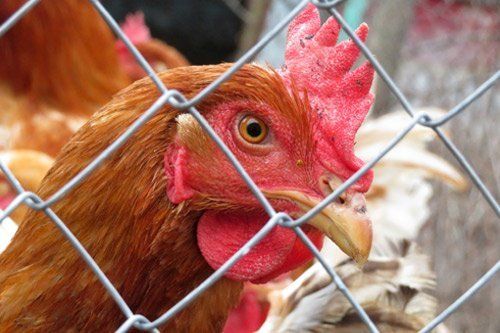Prevent Predators From Eating Your Chickens
Everyone loves a good chicken dinner - foxes and other predators most of all. Unfortunately, predators don't tend to pay for what they eat, and they have no respect if you're actually raising poultry for eggs instead of consumption. In other words, you need to keep predators out of your chicken coop.
You have different options both in material and in configuration for your poultry housing area. In fact, chicken coops are just one configuration. Below are ideas for coops, runs, and tractors, all with fencing that keeps your poultry safe from predators.
Chicken Coop Basics
When you think of chicken housing, you probably think of the chicken coop. The coop should consist of both an internal and an external area for your chickens. To keep predators out, it should be fully enclosed in a fencing material.
If you're raising laying hens, the inside of your coop needs a couple of extra features. The most obvious is the nest box, where the chickens sit while laying eggs. You need about one square foot of nesting space per four hens - any more space than that, and they'll brood around trying to hatch the eggs. Your coop should also consist of roosts so the chickens can get off the ground.
Chicken Run Basics
Your chicken coop also needs an outdoor area, which is called the chicken run. As noted above, the chicken run must be enclosed to keep the chickens safe. The run is where the chickens will sun themselves, dust bathe, forage in the grass, and scratch in the dirt.
Because this is where the chickens spend most of their time, you need a fair amount of space. Generally speaking, you should plan around four feet per bird.
Chicken Tractor Basics
A chicken tractor is essentially a movable chicken pen. At its most basic, the chicken tractor is a bottomless box with wheels. The idea is that you move the pen periodically around your property. The chickens, therefore, have access to fresh grass. A chicken tractor lets you simulate the effect of free-range chicken farming without risk of losing your stock to predators.
You can buy a premade chicken tractor. However, many poultry farmers prefer to customize their own. The tractor is actually a little more in-depth than a simple box with chicken wire. In fact, in addition to the wheels, the tractor should include an enclosed box on one end. This box houses the nest box on one side and roost poles on the other.
In addition to the enclosed box, you'll want hooks in the ceiling for hanging food and water to keep it fresh. You'll also want a hinged door somewhere in the construction to access the interior. As with the run, you'll probably want to allow about four square feet per chicken.
Chicken Wire Versus Hardware Cloth
No matter what style of chicken housing you build, you'll need some form of wire fencing. The two main styles are chicken wire and hardware cloth.
Chicken wire is exactly what you imagine - netting made of wire octagons. It is, in fact, woven out of wire at the factory. Typically speaking, chicken wire alone isn't enough to keep predators away from your poultry. Choose the heaviest gauge of wire and double-up during construction. You can also use chicken wire to extend the coop fence underground.
Most poultry experts recommend hardware cloth. This cloth is also fabricated using a weaving machine. However, manufacturers use a heavier grade of wire. And instead of octagons, the mesh is made up of squares.
Whether you choose chicken wire or mesh, look for small openings. You don't want foxes or other predators to work their snouts into the openings. If they can reach any part of your chickens, they'll do damage to your birds.
Keep your chickens safe from foxes and other hungry predators with specialized chicken fencing. Gulf Coast Fence Co has the supplies and advice you need.
Browse Our Website
contact information
Address: 5603 Veterans Blvd. Pascagoula, MS 39581
Phone: 228-769-2677
Fax: 228-896-7764
Email: gulfcoastfenceco@yahoo.com
Business Hours:
- Mon - Fri
- -
- Sat - Sun
- Closed













